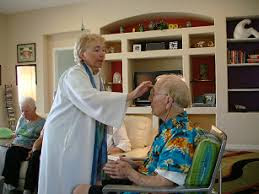PCS 204 - Jesus the Healer: Power, Mystery and Meaning
Join us for one evening with Dr. Shirley Paulson as she presents a lecture on Jesus the Healer.
Wednesday January 7, 2026
7PM Eastern Time
Cost: $29
For more information and to enroll, click here: https://pcseminary.teachable.
PCS 510 – Introducing Nag Hammadi and Related Texts
Wednesday, January 14, 2026
7PM Eastern Time
Course Facilitator: Dr.Shirley Paulson
This course meets every other week for six sessions beginning on January 14, 2026. Online weekly discussions start Wednesday, January 14, 7PM Eastern (6 Central, 5 Mountain, 4 Pacific).
Cost: $100
For more information and to enroll, click here: https://pcseminary.teachable.
This course delves into some remarkable ancient Christian texts that were discovered relatively recently in the twentieth century. An extremely important discovery, made near Nag Hammadi, Egypt, the Nag Hammadi collection includes 52 books, and 40 of them were a complete surprise to modern scholars! Nobody knows why they were lost for 1600 years, but these new-old documents expand our knowledge of Jesus and his early followers. In fact, although they expose some prevalent misperceptions about early Jesus followers, the real roots of Christianity, the innovation and insights contained in these documents are quite inspiring. The course specifically focuses on some of the more famous discoveries, such as the Gospel of Thomas and the Gospel of Mary, as well as a few lesser-known works.
The course is divided into six sections, each section containing four lectures. You can watch the recordings at your convenience and enjoy continuing access to it. The full course includes nearly three hours of recorded instruction.
PCS 601 – Creating Homilies for Liturgical Seasons
Monday, January 19, 2026
4PM Eastern Time
Course Facilitator: Dr.Bridget Mary Meehan
This course meets every other week for six sessions beginning on January 19., 2026
For more information and to enroll, click here: https://pcseminary.teachable.
Participants will work in a cohort to create inspiring homilies and homily starters, to implement effective delivery, and to incorporate contemporary scholarship of scripture through various approaches, including Chat-GPT for sermon development throughout the liturgical seasons.
COMING SOON –
PCS 205 –Unpacking the Sunday Old Testament Readings for Lent 2026
Thursday, January 29, 2026
7PM Eastern Time
Course Facilitator: Rabbi Anna Maranta
This six-session course will meet every other week beginning on January 29, 2026
More information to follow










